Hello and welcome!
Last month, Cardinal Archbishop of Barcelona Joan Josep Omella i Omella invited me to give a retreat for the clergy of Barcelona that went from Sunday, January 12, to Friday, the 18th.
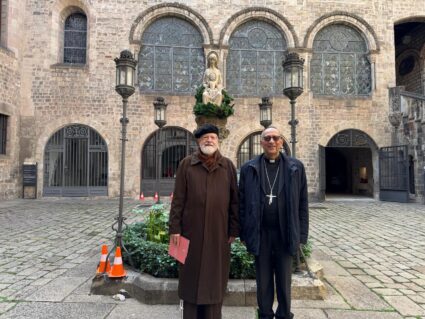
I arrived a few days before the retreat was to start and the local Capuchins took me to see two very famous mountains near Barcelona: Montserrat and Tibidabo.
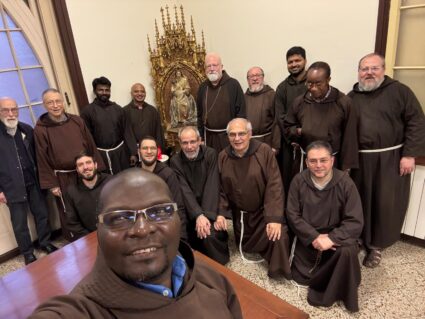
Montserrat is the home of the Benedictine Monastery of Santa Maria de Montserrat, which is the home of the statue of Our Lady of Montserrat.
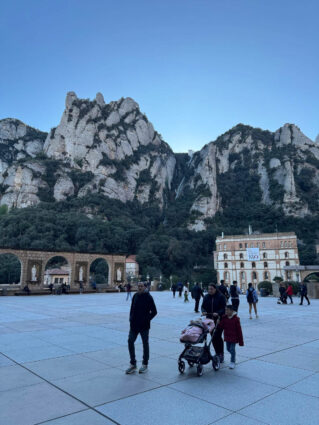
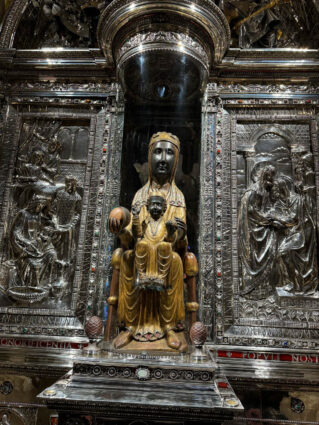
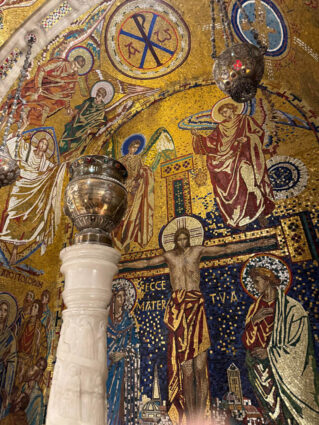
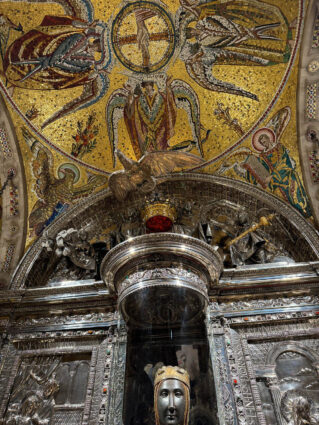
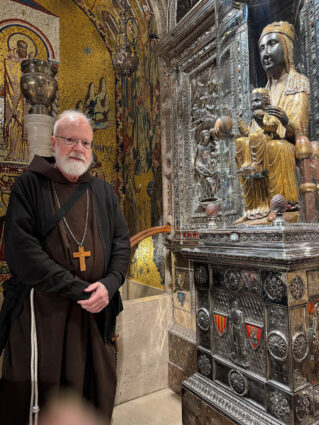
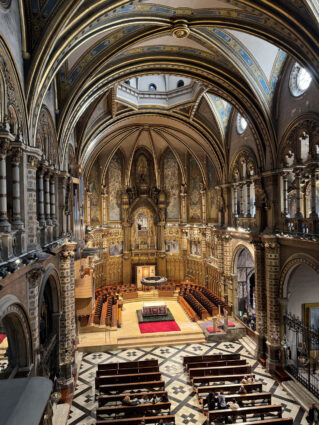
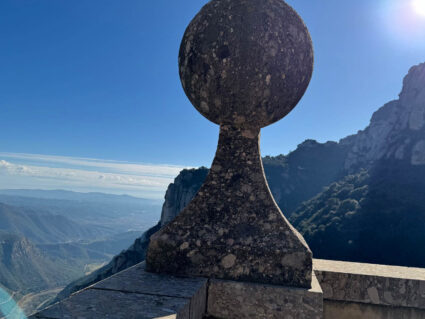
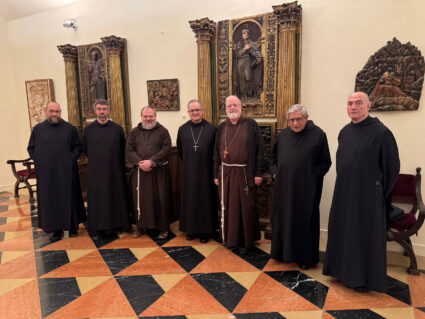
This is the place where, when St. Ignatius of Loyola converted, he took his sword and arms and put them at the feet of Our Lady of Montserrat. That is why, when the Jesuits built a new chapel for priests and seminarians at their Peter Faber community in Boston, I gave them a statue of Our Lady of Montserrat.
The monastery is over a thousand years old and is very impressive to see thier library.
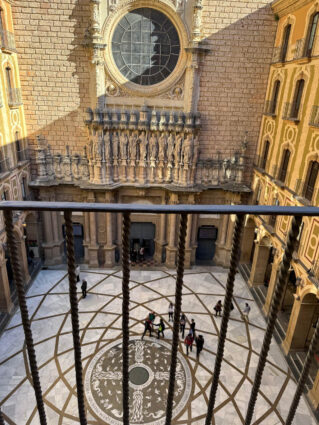
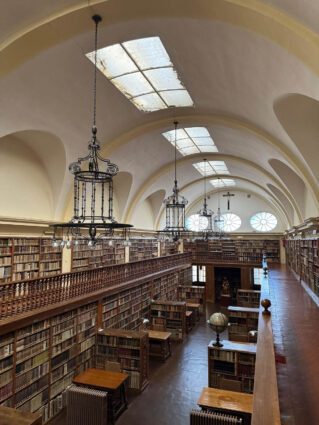
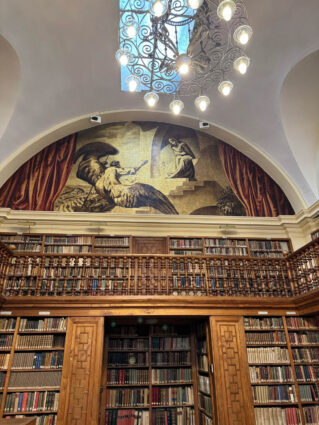
I was particularly taken with this map of the world they have.
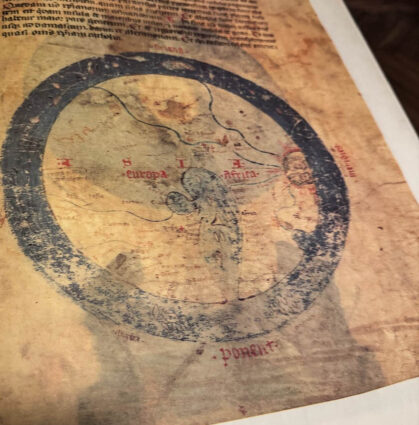
It’s a little hard to see, but did you notice that the Americas are missing? It’s because it was made before the time of Columbus!
From there we went to Tibidabo, where there is the built by St. John Bosco.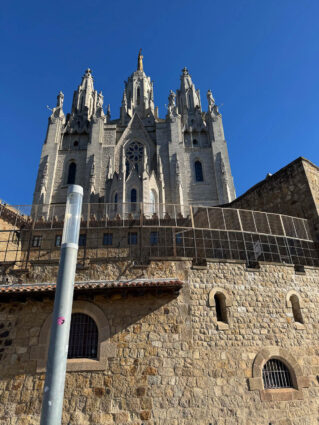
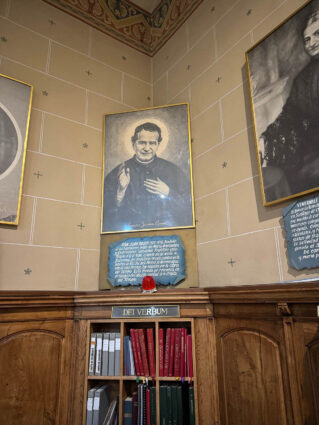
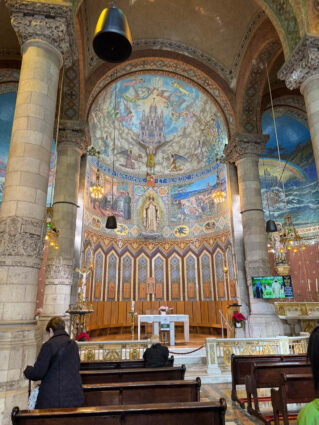
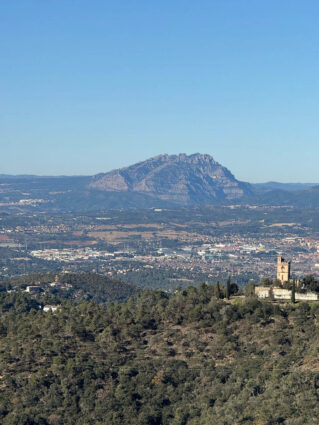
There is a window there depicting the theme where the name Tibidabo comes from. When Satan was tempting the Lord, he said, “et ait ei tibi dabo” (“I will give it to you”) if you worship me.
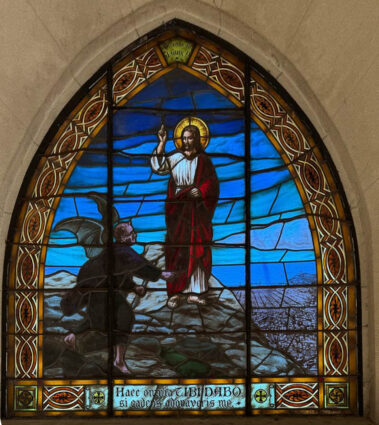
Then, on Sunday the 12th, the morning before the retreat started, I celebrated Mass at the famous basilica, Sagrada Família, which they say is the most visited site in Spain. It was what they call the International Mass, which is celebrated in Latin, and I preached a little bit in French, Italian, Portuguese, English and Spanish.
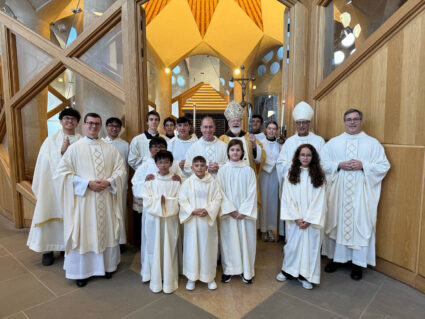
All the other Masses are in Catalan, so it’s a big draw for anyone who doesn’t speak the language, and there were about 2,000 people there.
The basilica itself is quite impressive. The columns and the windows are just stunning, so it’s definitely worth a visit.
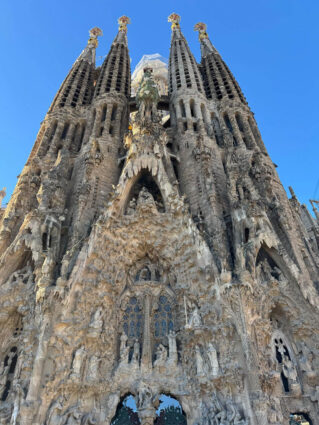
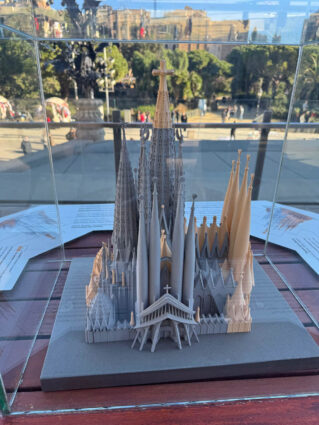
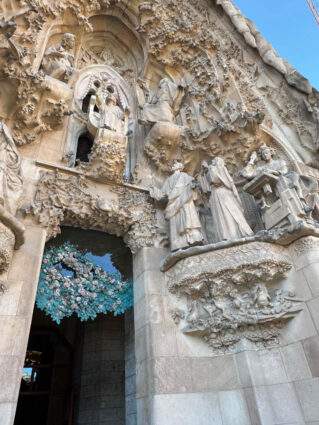
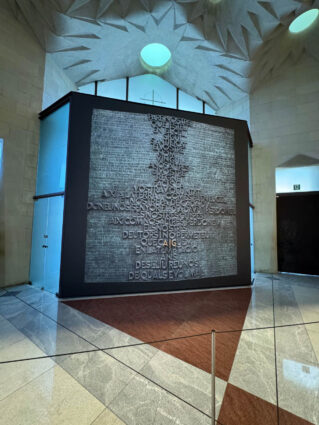

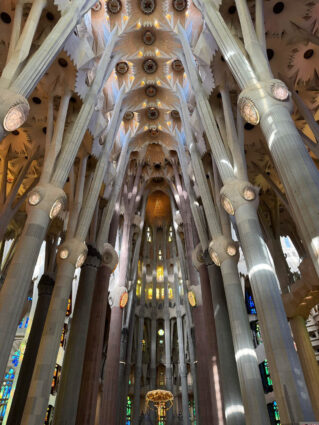
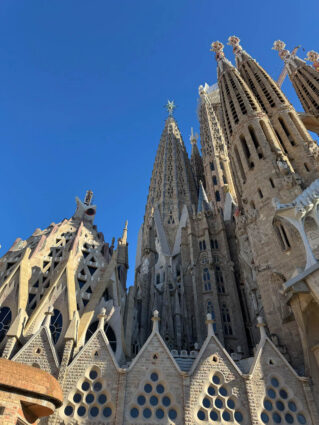
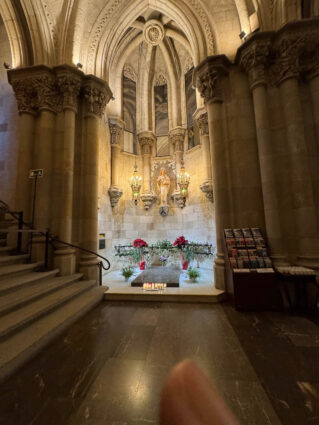
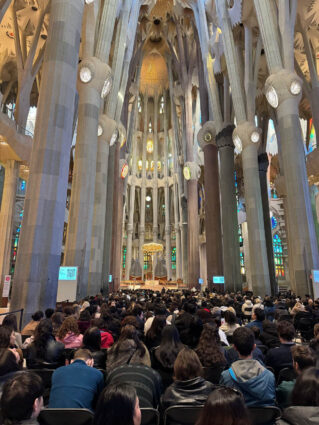
The tomb of the architect who designed Sagrada Familia, Antoni Gaudí, is in the crypt below.
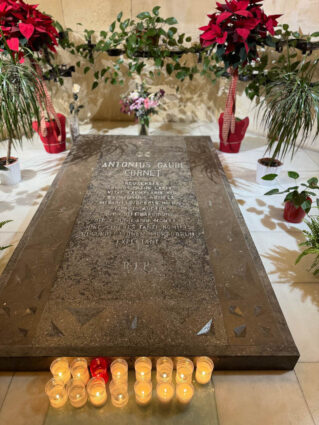
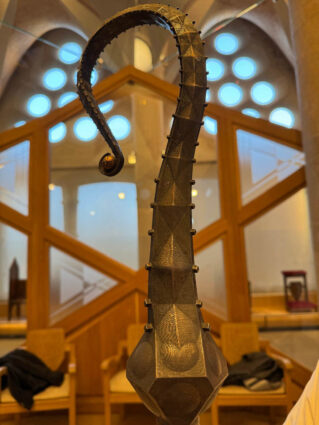
The interesting thing is, if you don’t have the time to make the line, you really don’t have to go inside to see beautiful artwork. Inside, there are only three statues: one of Jesus, one of Mary and one of Joseph. All the other statues are on the outside. The whole life of Christ is on the outside of the building.
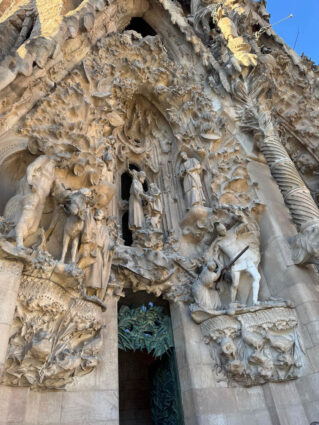
As I said, the retreat went from Sunday to Friday, and there were about 50 priests with us. It was a very serious retreat, all in silence, with holy hours every day, and we prayed the office in Catalan.
The retreat house where it was held was just outside the city. It’s run by the Franciscan Sisters of the Sacred Heart and is right on the Mediterranean; you can see the ocean on one side and the mountains on the other. It’s a very beautiful spot.
In this photo of the retreat house, you see the garden with all the flowers. (While it was snowing in Boston, we had lovely weather there!)
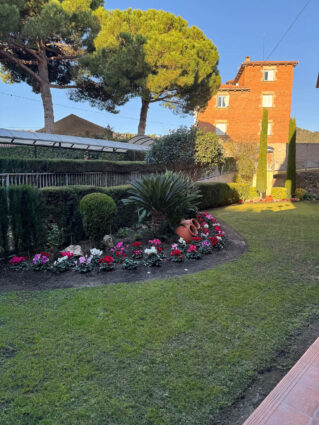
Their founder was a Capuchin. They have a very classical photo of him with the tonsure. (In Europe, they wore the tonsure into the 1970s.)
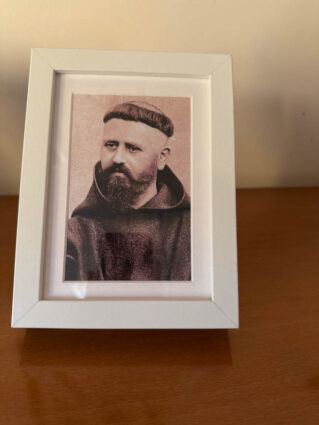
In addition to the retreat house, the sisters have a home for children with mental and physical disabilities where they also house their retired sisters. So, the cardinal and I went to visit them.
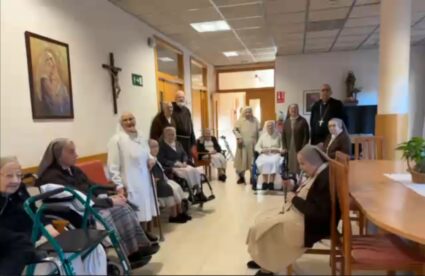
After the retreat ended on Friday evening, I came back to the city and met with the seminarians of Barcelona and had a time of dialogue with them.
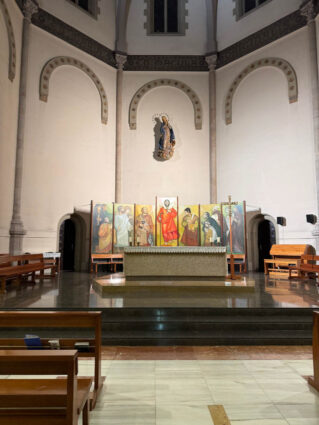
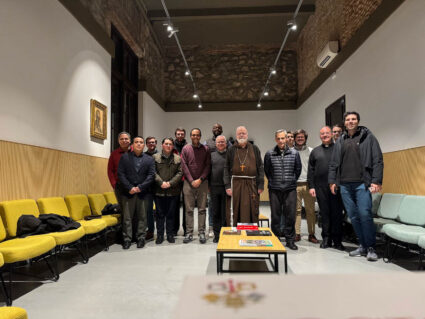
While I was in the city, I stayed at the Cathedral of St. Eulalia.
Barcelona is interesting in that it has three churches that people often call “cathedrals”: Sagrada Família, the Basilica of St. Mary of the Sea, often called El Catedral del Mar (The Cathedral of the Sea); and St. Eulalia. While the other two are impressive basilicas, St. Eulalia is the only one that properly deserves that title.
One of the towers in the bishop’s palace was built by Caesar Augustus. So it’s 2,000 years old.
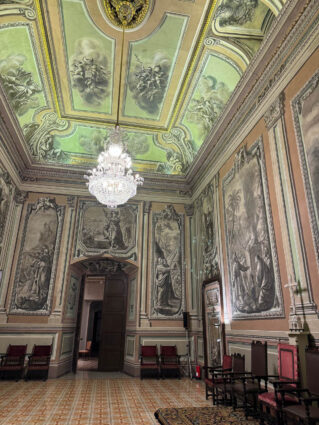
The cathedral has a choir in the center, and at the far end lies the crypt containing the remains of St. Eulalia.
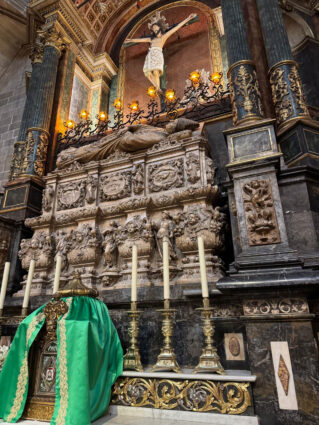

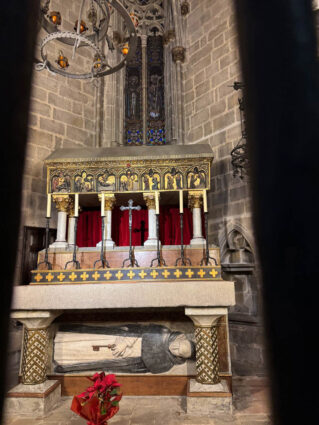
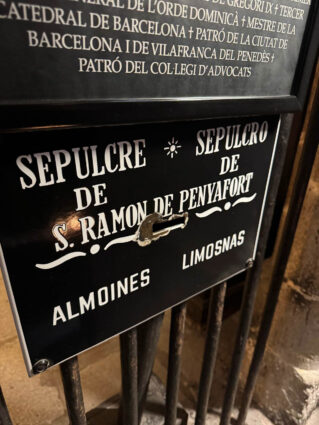
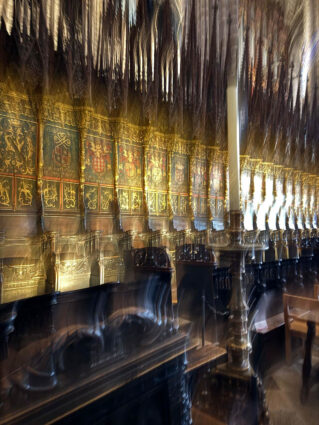
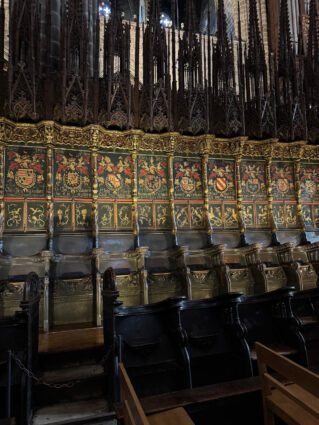
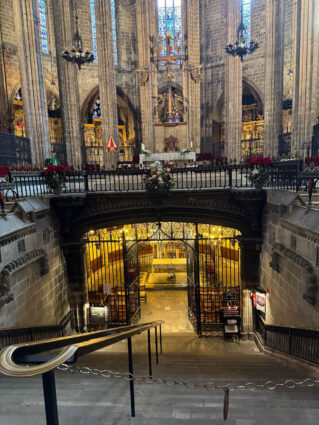
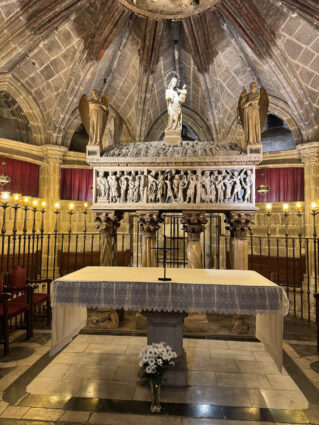
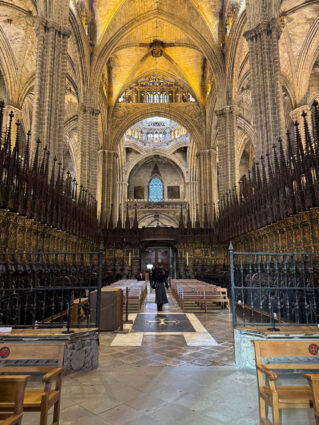
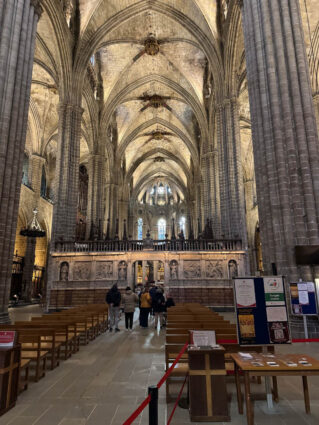
Above the crypt is the high altar, which has the Christ of Lepanto, the figurehead from the ship that led the flotilla into the Battle of Lepanto.
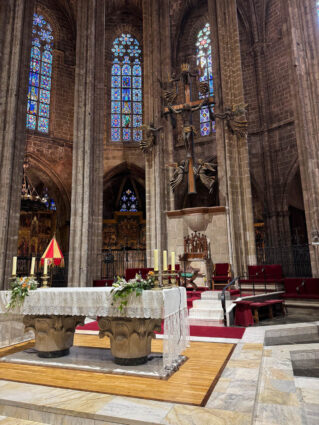
In the cloister, there are 13 geese, which are the security system for the cathedral. If anyone tries to sneak in, those birds will squawk their heads off! There are 13 geese because St. Eulalia was 13 years old when she was martyred.
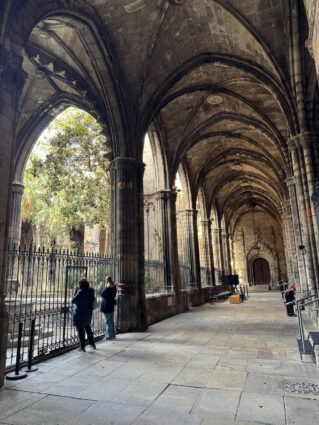

Another thing I learned about the cathedral is that every night, people come from the parishes and sing — and stand under my window!
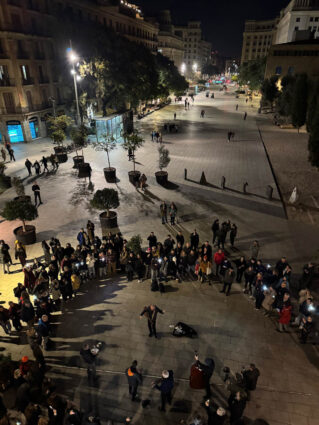
Near the cathedral is the Temple of Augustus, a structure built by Caesar Augustus.
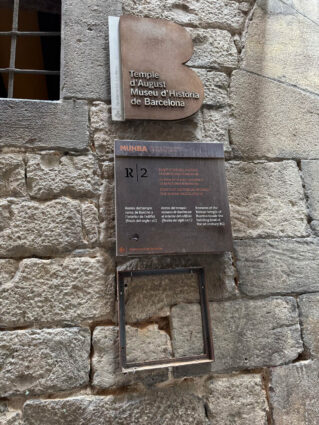
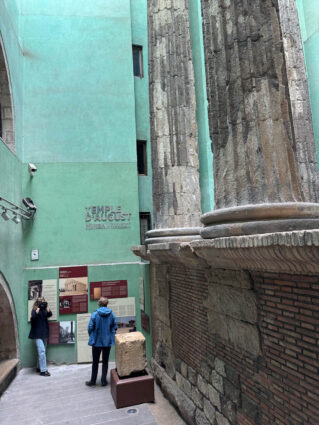
The Catedral del Mar is also very close to St. Eulalia. It was built with contributions from the poor — the fishermen, stevedores and sailors of the city.
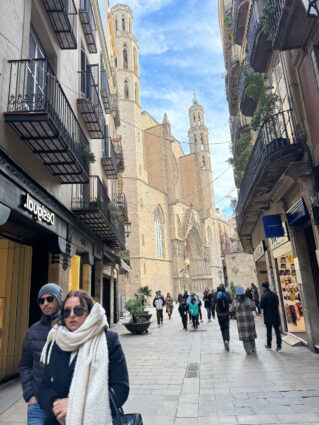
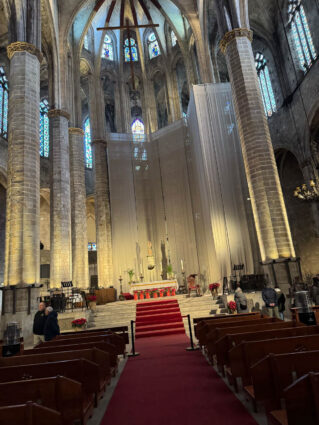
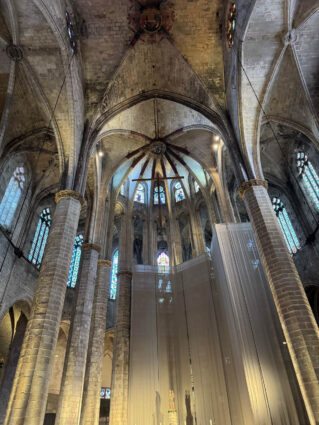
That’s the church where St. Ignatius of Loyola went after he was ordained and sat on the steps begging for money to be able to go to the holy land. So, outside, they have a statue of St. Ignatius begging.
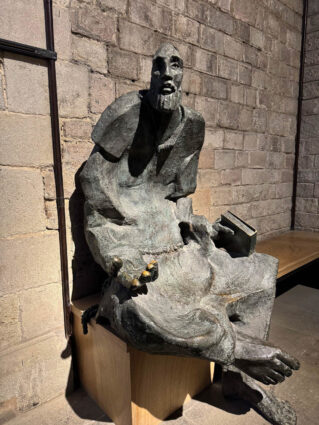
Following the retreat, I came back to Boston to celebrate the funeral of Robert Travers, Sr. Mr. Travers was the head of the Society of St. Vincent de Paul. He spent decades of his life working for the Church. He and his wife are so supportive of many of our priests and, of course, his son, Bobby Travers, works here at the Cathedral of the Holy Cross, helping out in many different ways.
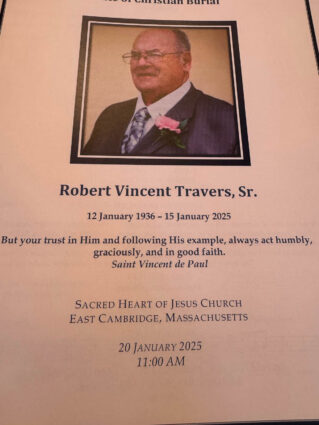
So, there were many people there at his funeral. His last days were at St. Patrick’s with the Carmelite sisters of the Aged and Infirm, who were so good to him.
Then, on January 22nd, I went to New York for the Inaugural Heart of the Missions Dinner to benefit the Pontifical Mission Societies USA.
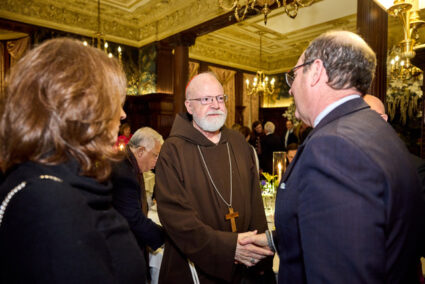
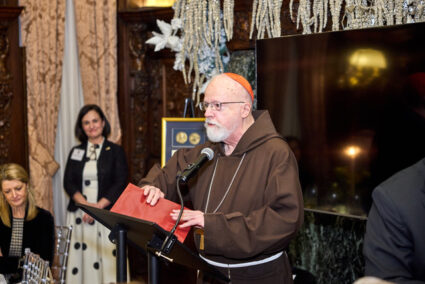
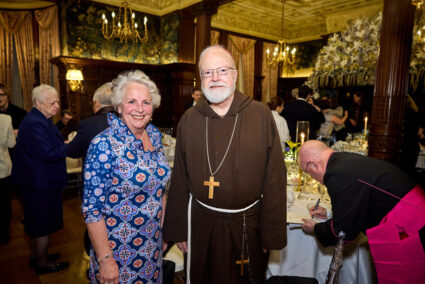
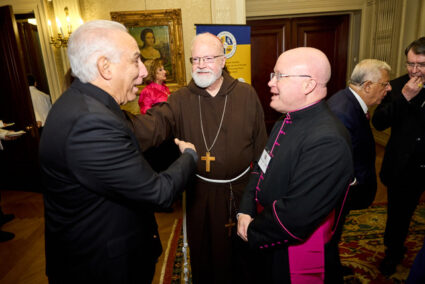
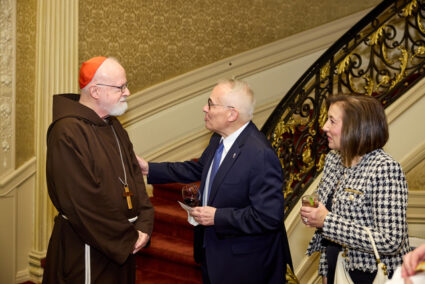
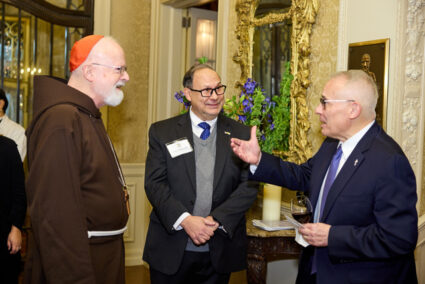
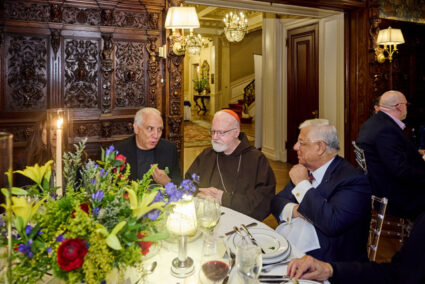
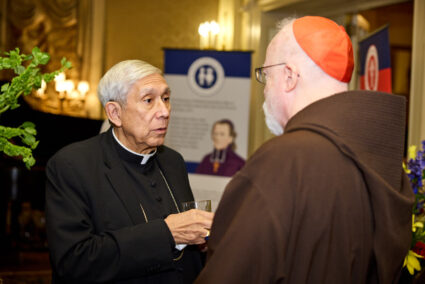
They presented me with their first Blessed Pauline Jaricot Distinguished Catholic Philanthropy Medal, named after the foundress of the Pontifical Mission Societies.
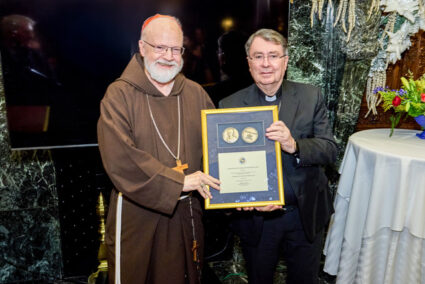
In my comments, I talked about how, when we celebrated the Bicentennial of the Archdiocese of Boston, we discovered letters from France sending money to help establish the then-missionary Diocese of Boston.
I also talked a little bit about how important the missions were in my family and parish growing up.
Our Diocese of Cleveland had a mission in El Salvador where, since the time I was a small child, they were sending a mission team, which was made up of priests, sisters and lay people. From my parish, the curate, Father Dennis St. Marie spent 25 years in El Salvador and Jean Donovan, one of the women who was martyred in El Salvador, is from my parish. Bishop Archbishop Sheen, who was head of the Propagation of the Faith, would also come every year, and that was always a very exciting event for us.
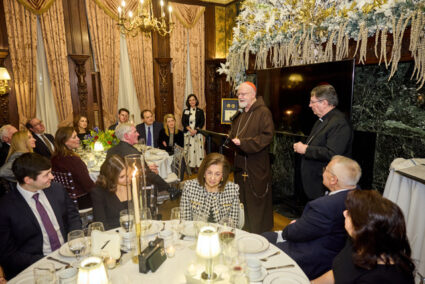
I also talked about Maryknoll Magazine and how much of an impact this made and the Holy Childhood Association in our Catholic schools.
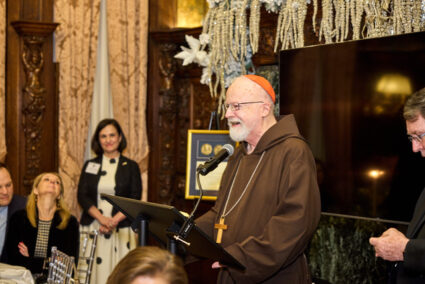
Of course, today, we need to reemphasize the Church’s mission to spread the Gospel. So, I was very pleased that Bishop da Cunha of Fall River has allowed Msgr. Roger Landry to take over the responsibility as National Director of The Pontifical Mission Societies USA. The energy, commitment and zeal that he has are going to be very important factors in trying to put our focus once again on the mission of the Church to carry the Gospel to the ends of the earth.
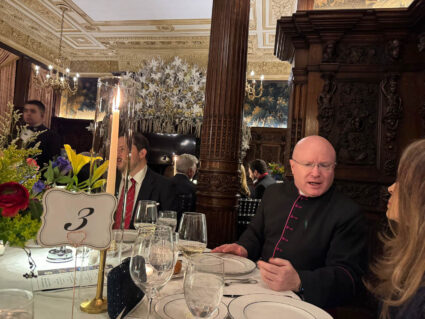
This was one of the first activities that Msgr. Landry has organized. So, we were happy to be a part of it.
January 24 was, of course, the 52nd annual March for Life.
As always, on the evening before the March, we have the Opening Mass of Prayer Vigil for Life at the Basilica of the National Shrine of the Immaculate Conception.
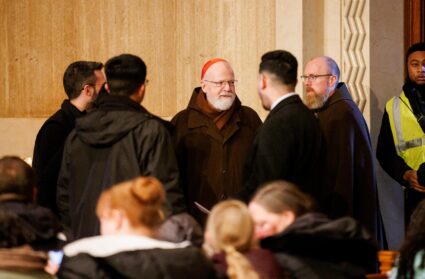
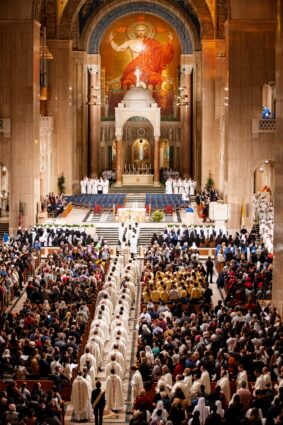
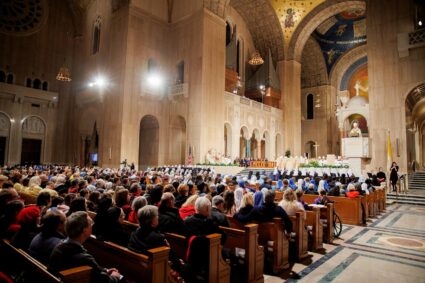
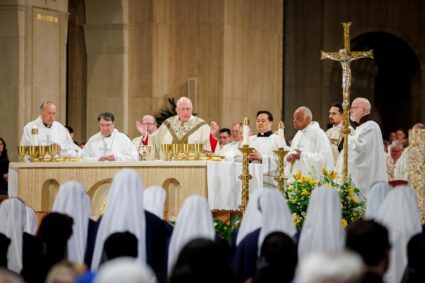
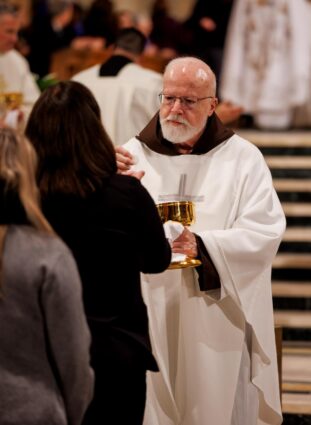
Then, this year, on the morning of the March, our Boston group attended Life Fest and Archbishop Henning celebrated Mass with the Boston seminarians at the Dominican House of Studies, as I have done in the past.
I had Mass with the Capuchin Friars and some of the parishioners from Sacred Heart in the crypt of the Basilica of the National Shrine of the Immaculate Conception.
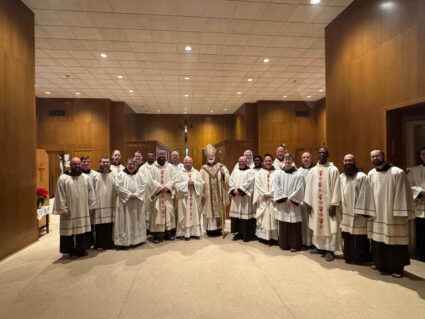
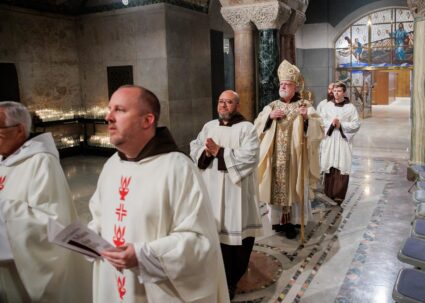
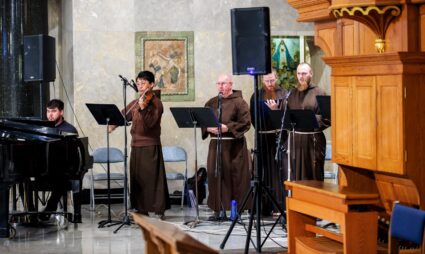
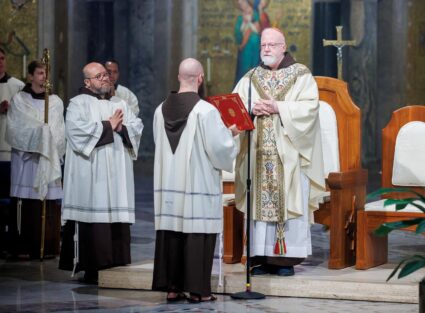
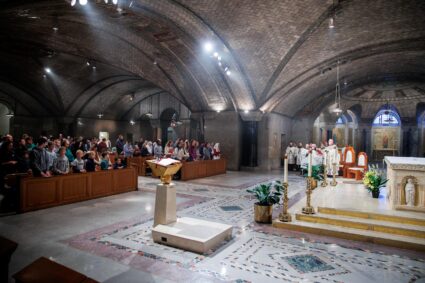
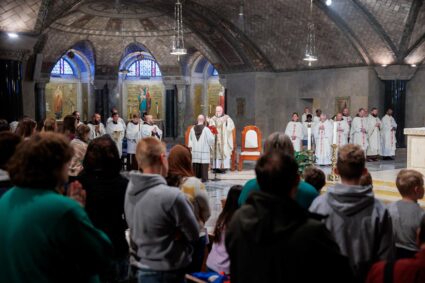
A young friar whom I ordained a year ago, Father Michael Herlihey, preached and did a great job with the homily.
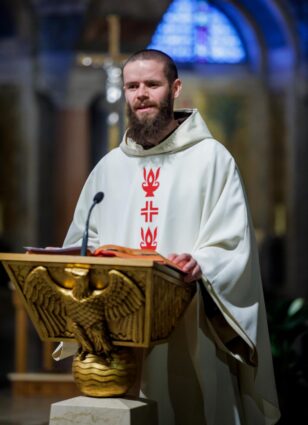
For many of us, the crypt church is a very important place. It’s where I was tonsured, ordained a deacon and received all my minor orders.

The crypt is the original part of the shrine. It was constructed first, and then the upper church was completed only many decades later.
On the walls they have beautiful mosaics of the saints from the Roman Canon.
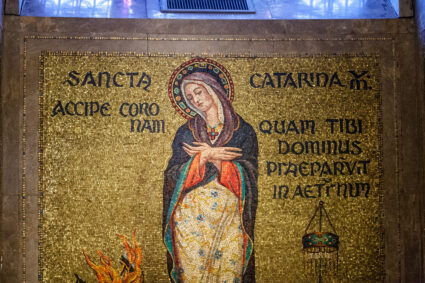
I have many wonderful memories of that place. It is very special, and I was very happy to be there.
From there, we went to the rally at the National Mall.
They don’t release attendance figures for the March, but there were huge crowds. Among the speakers was the new vice president, who I think gave a very good talk.
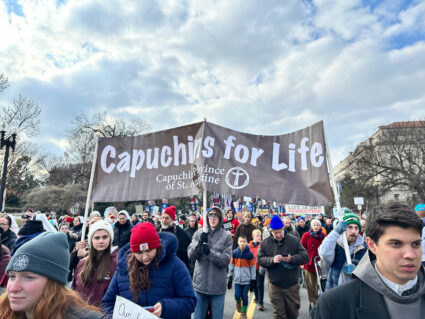
During the March, I ran into our Boston seminarians and the group from Harvard University with Father Nate Sanders. I told the Harvard group about the first March for Life when Xavier Suarez and two of his buddies came and slept on the floor of the Centro Catolico. They went to the March with a huge sign that said “Harvard Law Students for Life,” but, of course, there were only three of them! So, over 50 years later, I was very happy to see that there were a lot more Harvard students coming to the March!
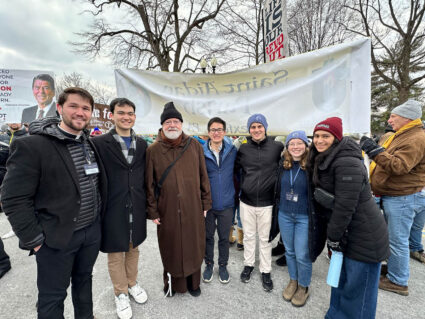
I also ran to the new Archbishop of Washington, Cardinal McElroy, who will be installed next month.
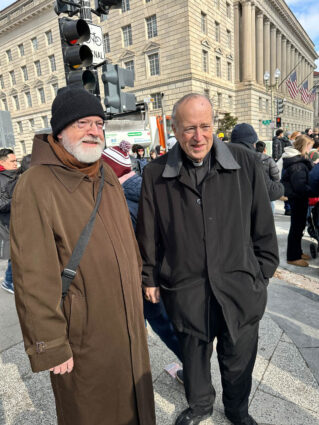
I also saw the Auxiliary Bishop of Washington Evelio Menjivar-Ayala, who, for a while, was pastor of the place I had been pastor of, Our Lady Queen of the Americas.
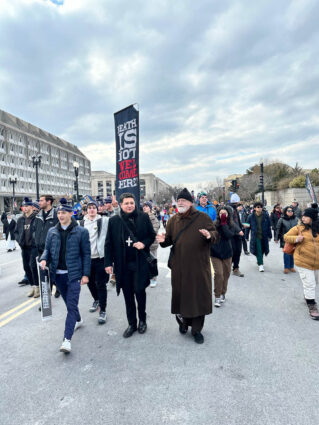
As I always like to say, the March for Life is something of the poor man’s World Youth Day. It is an opportunity for our young people to feel affirmed in their faith and be together with thousands and thousands of their fellow Catholics and young people from all over, publicly witnessing to our faith and the Gospel of Life. So, I was very grateful to all of those from Boston who came and those who helped organize our pilgrimages.
While I was in Washington, I had dinner at the home of Manella and Tony Dies. With us was Oblate Father Leo Perez, the director of the Subcommittee for the Church in Latin America at the USCCB; Father Emilio Biosca, the pastor of Sacred Heart, the Capuchin parish in Washington; and Auxiliary Bishop of Havana Eloy Domínguez.
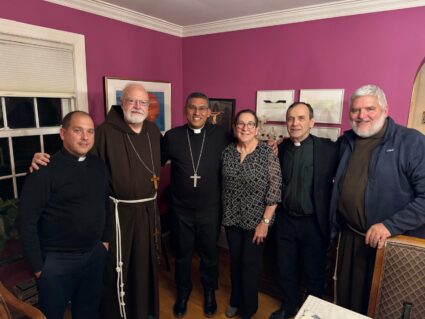
Bishop Domínguez has had the responsibility of working with the prisoners who have been released.
As I mentioned in my January 14 post, one of the things that I have been involved in the last few years has been trying to work for the release of prisoners in Cuba. The Holy Father sent me with letters to Cuban President Díaz-Canel and former President Raúl Castro.
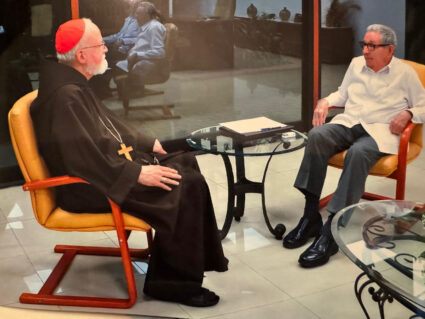
I was so delighted that, following meetings in Rome, Havana, Washington and New York, the Cuban government made the announcement that they are going to start releasing those prisoners. About 200 have been released so far and they did assure us that they would continue releasing up to 553 people in response to Pope Francis’s appeal.
They are doing this as part of the Jubilee celebrations. The Holy Father, in his letter on the Jubilee, “Spes non confundit,” “Hope does not disappoint,” calls us to be a sign of hope to prisoners. So, it is wonderful that just in the last few days before the beginning of the Jubilee Year, the Holy Father’s appeal to President Biden to commute the death sentences of about 40 people in the United States on death row received a positive response. The Holy Father had also made a request that some kind of clemency be made for Leonard Peletier, the Native American activist who has been imprisoned for 50 years and who is very, very sick. That also was granted.
Then, of course, there was the release of these prisoners in Cuba.
I think it was almost miraculous that we had that wonderful response to the Holy Father’s appeals just as we were beginning this Jubilee year of hope.
Finally, I’d like to offer you some of my thoughts on the recent movie Conclave.
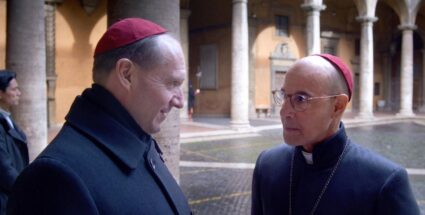
So many people who have seen it come up to me and say, “Was it really like that?” My answer is, no, it wasn’t really like that.
The author, of course, has a surprise ending that I will not give away here, but my experience of being in at least one conclave was not that it was some sort of scene of political backroom plotting of how to get your candidate elected. It was an experience of a very intense retreat where there was much prayer and silence and listening to conferences on spiritual themes.
Throughout the process, we had a very acute awareness that millions of Catholics around the world were praying for us so that the Holy Spirit would guide us in our deliberations. And, of course, at the moment when each cardinal votes, you take your ballot, stand in front of Michelangelo’s image of Christ in the Last Judgment and swear before God that you are going to vote for the person that you believe is God’s will for the Church.
It’s a much different experience than what they depicted in the movie. For all its artistic and entertainment value, I don’t think the movie is a good portrayal of the spiritual reality of what a conclave is.
Until next time,
Cardinal Seán
